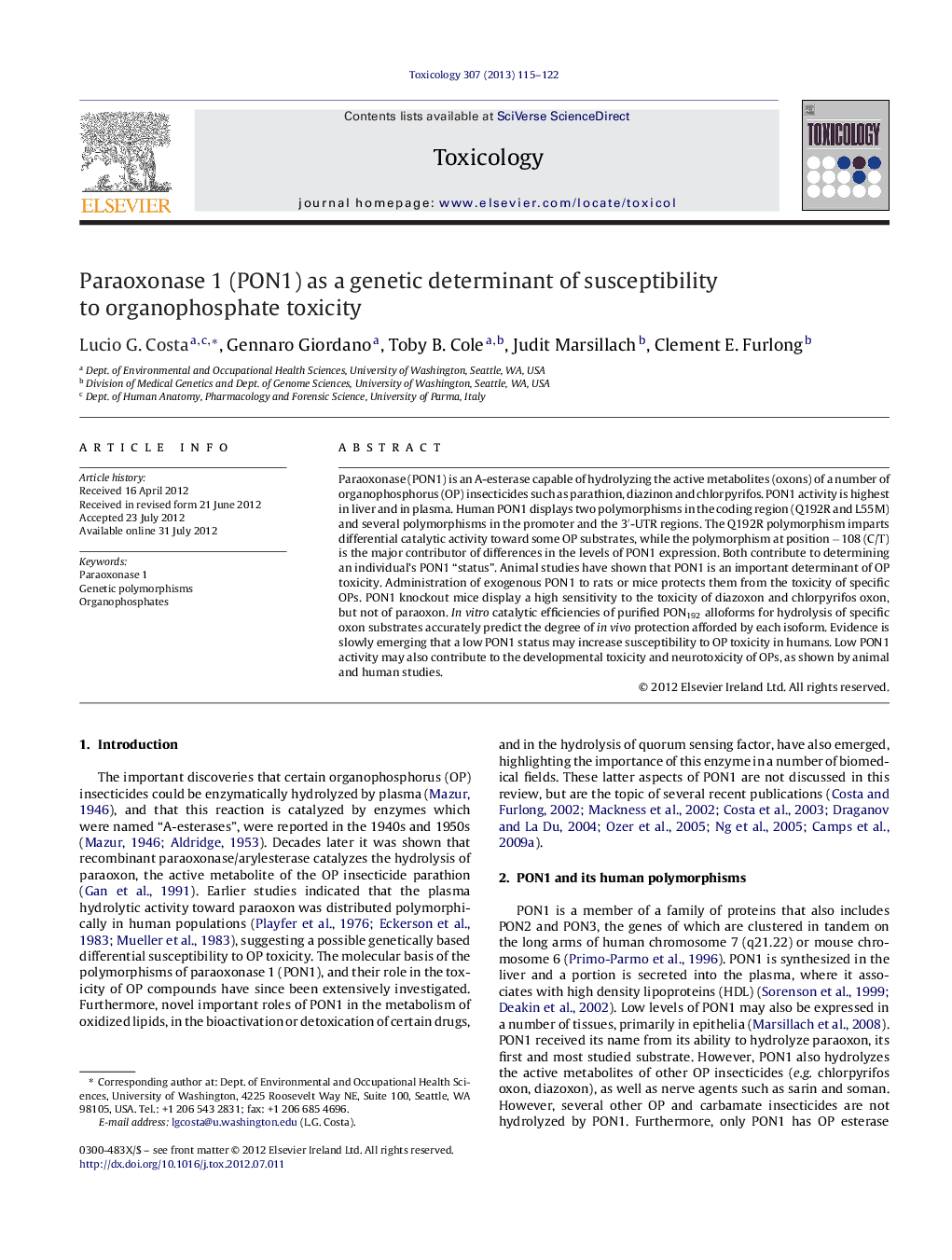| کد مقاله | کد نشریه | سال انتشار | مقاله انگلیسی | نسخه تمام متن |
|---|---|---|---|---|
| 2595701 | 1562349 | 2013 | 8 صفحه PDF | دانلود رایگان |

Paraoxonase (PON1) is an A-esterase capable of hydrolyzing the active metabolites (oxons) of a number of organophosphorus (OP) insecticides such as parathion, diazinon and chlorpyrifos. PON1 activity is highest in liver and in plasma. Human PON1 displays two polymorphisms in the coding region (Q192R and L55M) and several polymorphisms in the promoter and the 3′-UTR regions. The Q192R polymorphism imparts differential catalytic activity toward some OP substrates, while the polymorphism at position −108 (C/T) is the major contributor of differences in the levels of PON1 expression. Both contribute to determining an individual's PON1 “status”. Animal studies have shown that PON1 is an important determinant of OP toxicity. Administration of exogenous PON1 to rats or mice protects them from the toxicity of specific OPs. PON1 knockout mice display a high sensitivity to the toxicity of diazoxon and chlorpyrifos oxon, but not of paraoxon. In vitro catalytic efficiencies of purified PON192 alloforms for hydrolysis of specific oxon substrates accurately predict the degree of in vivo protection afforded by each isoform. Evidence is slowly emerging that a low PON1 status may increase susceptibility to OP toxicity in humans. Low PON1 activity may also contribute to the developmental toxicity and neurotoxicity of OPs, as shown by animal and human studies.
Journal: Toxicology - Volume 307, 10 May 2013, Pages 115–122